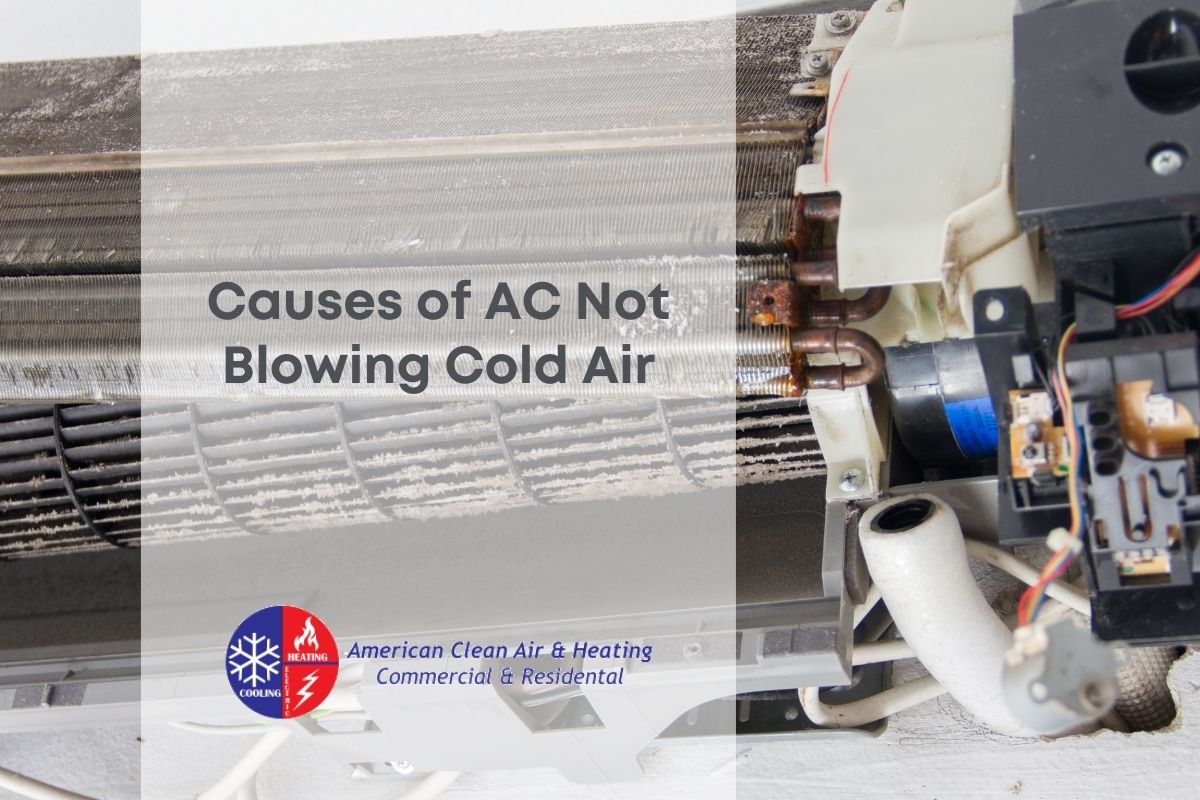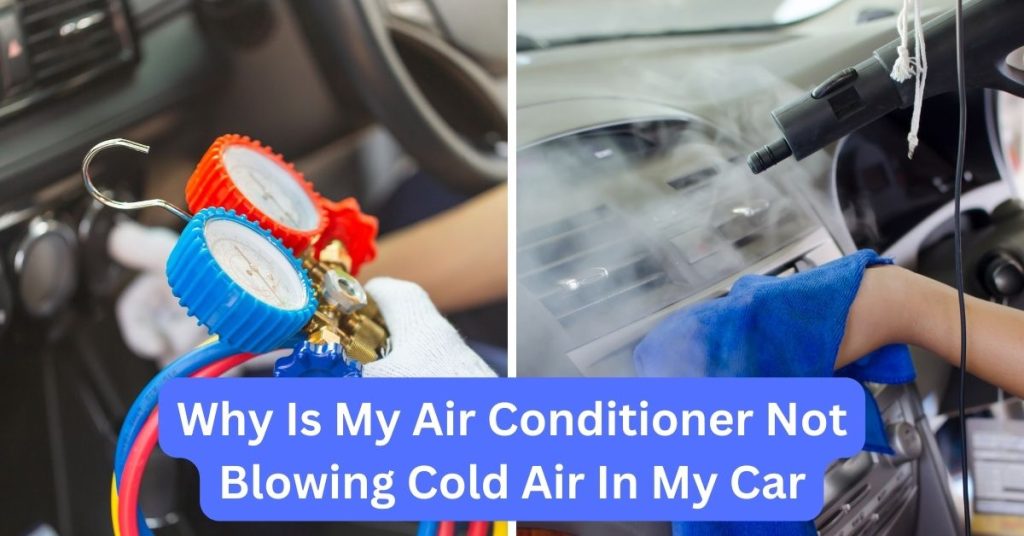Why Is My Ac On But Not Blowing Cold Air

A central air conditioning system is crucial for maintaining a comfortable indoor environment, especially during the sweltering summer months. However, a common and frustrating problem homeowners, facility managers, and even seasoned HVAC technicians encounter is an air conditioner that is running but failing to produce cold air. This issue can stem from various underlying causes, ranging from simple fixes to more complex mechanical failures. Understanding the potential reasons behind this problem is the first step toward effective troubleshooting and repair.
Common Causes of an AC Not Blowing Cold Air
Several factors can contribute to your AC unit's inability to cool your home effectively. We'll break down the most frequent culprits, categorizing them for clarity.
Refrigerant Issues
Refrigerant, often referred to as Freon (although newer systems use more environmentally friendly alternatives like R-410A), is the lifeblood of your AC system. It absorbs heat from inside your home and releases it outside. Problems with refrigerant can significantly impact cooling performance.
- Low Refrigerant Levels: A common cause is a refrigerant leak. Even small leaks can gradually reduce refrigerant levels, diminishing the AC's cooling capacity. If you suspect a leak, it's crucial to call a qualified HVAC technician. They can locate the leak, repair it, and recharge the system with the correct amount of refrigerant.
- Refrigerant Leaks: Leaks can occur at various points in the system, including connections, coils, and valves. Identifying and repairing leaks requires specialized equipment and expertise. Attempting to handle refrigerant yourself is highly discouraged due to environmental regulations and safety concerns.
- Incorrect Refrigerant Type: Adding the wrong type of refrigerant to an existing system can cause serious damage. Older systems designed for R-22 (Freon) cannot use R-410A without significant modifications. Always consult with a professional to ensure the correct refrigerant is used.
Airflow Obstructions
Proper airflow is essential for efficient AC operation. Restrictions in airflow can prevent the system from effectively cooling the air.
- Dirty Air Filter: A clogged air filter is one of the most common and easily preventable causes. A dirty filter restricts airflow, forcing the AC unit to work harder and reducing its cooling efficiency. It can also lead to the evaporator coil freezing up. Change your air filter every 1-3 months, or more frequently if you have pets or allergies.
- Blocked Vents: Ensure that supply and return vents are not blocked by furniture, curtains, or other obstructions. Blocked vents restrict airflow to specific rooms, making it difficult to maintain a consistent temperature throughout your home.
- Dirty Evaporator Coil: The evaporator coil is located inside the indoor unit and absorbs heat from the air. Over time, it can accumulate dust and dirt, reducing its ability to transfer heat effectively. A professional cleaning is often required.
- Dirty Condenser Coil: The condenser coil is located outside the outdoor unit and releases heat to the outside air. If it's covered in dirt, leaves, or debris, it won't be able to dissipate heat efficiently, leading to poor cooling performance. Regularly clean the condenser coil with a garden hose (gently!) to remove debris. Avoid using high-pressure washers, as they can damage the fins.
Compressor Problems
The compressor is the heart of your AC system, responsible for circulating refrigerant. If the compressor fails, the AC will not cool effectively.
- Compressor Failure: A failing compressor can manifest in several ways, including unusual noises, reduced cooling capacity, or complete failure. Compressor replacement is a significant repair and often involves a substantial cost.
- Capacitor Issues: Capacitors provide the electrical surge needed to start and run the compressor motor. A weak or failing capacitor can prevent the compressor from starting or running efficiently. Capacitors are relatively inexpensive to replace, but diagnosing the problem requires a multimeter and knowledge of electrical safety.
Electrical Issues
Electrical problems can disrupt the AC system's operation and prevent it from cooling properly.
- Tripped Circuit Breaker: Check the circuit breaker that supplies power to the AC unit. A tripped breaker can indicate an electrical overload or other electrical problems. Reset the breaker. If it trips again immediately, call an electrician to investigate.
- Wiring Problems: Loose or corroded wiring connections can interrupt the flow of electricity to the AC unit. Inspect wiring connections and tighten or replace any damaged wires. Electrical work should always be performed by a qualified electrician.
Other Potential Issues
- Frozen Evaporator Coil: As mentioned earlier, restricted airflow due to a dirty air filter or other obstructions can cause the evaporator coil to freeze up. Turn off the AC and allow the coil to thaw completely. Once thawed, address the underlying airflow issue.
- Ductwork Leaks: Leaks in the ductwork can allow conditioned air to escape into unconditioned spaces, reducing the overall cooling efficiency of the system. Sealing ductwork can improve efficiency and reduce energy waste.
- Thermostat Malfunction: A faulty thermostat may not accurately sense the temperature or properly control the AC system. Test the thermostat to ensure it's functioning correctly. Consider replacing it with a programmable or smart thermostat for improved control and energy savings.
Troubleshooting Steps for Homeowners
Before calling an HVAC technician, there are several troubleshooting steps homeowners can take:
- Check the Thermostat: Ensure the thermostat is set to "cool" and the temperature is set lower than the current room temperature. Verify that the thermostat is powered on and functioning correctly.
- Inspect the Air Filter: Replace the air filter if it's dirty. A clean air filter can significantly improve airflow and cooling performance.
- Check the Outdoor Unit: Ensure the outdoor unit is free from obstructions such as leaves, branches, or debris. Clean the condenser coil with a garden hose.
- Reset the Circuit Breaker: Check the circuit breaker that supplies power to the AC unit and reset it if it has tripped.
- Check for Ice Buildup: Inspect the evaporator coil for ice buildup. If ice is present, turn off the AC and allow it to thaw completely. Then, address the underlying airflow issue.
When to Call a Professional HVAC Technician
While some issues can be resolved by homeowners, others require the expertise of a qualified HVAC technician. Call a professional if:
- You suspect a refrigerant leak.
- The compressor is making unusual noises or is not functioning properly.
- You suspect electrical problems.
- You are uncomfortable working with electrical components or refrigerant.
- The problem persists after performing the troubleshooting steps outlined above.
Preventative Maintenance for Optimal AC Performance
Regular preventative maintenance is essential for ensuring optimal AC performance, extending the lifespan of your system, and preventing costly repairs. Consider the following maintenance tasks:
- Annual Tune-Up: Schedule an annual tune-up with a qualified HVAC technician. During a tune-up, the technician will inspect and clean the system, check refrigerant levels, test electrical components, and identify potential problems before they escalate.
- Regular Filter Changes: Replace the air filter every 1-3 months, or more frequently if you have pets or allergies.
- Coil Cleaning: Clean the condenser coil regularly with a garden hose. Consider professional cleaning of the evaporator coil every few years.
- Ductwork Inspection: Inspect ductwork for leaks and seal any leaks with duct tape or mastic sealant.
Cost Considerations
The cost of repairing an AC system that is not blowing cold air can vary widely depending on the nature of the problem. Simple fixes, such as replacing a dirty air filter, may cost only a few dollars. More complex repairs, such as compressor replacement, can cost several thousand dollars.
Here's a general idea of potential costs:
- Air Filter Replacement: $5 - $20
- Refrigerant Recharge: $200 - $800 (depending on refrigerant type and amount needed)
- Capacitor Replacement: $100 - $300
- Evaporator Coil Cleaning: $100 - $400
- Compressor Replacement: $1,500 - $4,000
Preventative maintenance can help reduce the likelihood of costly repairs. An annual tune-up typically costs between $100 and $300.
Conclusion
An AC system that is running but not blowing cold air can be a frustrating issue. By understanding the potential causes and taking appropriate troubleshooting steps, homeowners, facility managers, and HVAC technicians can effectively diagnose and resolve the problem. Regular preventative maintenance is crucial for ensuring optimal AC performance, extending the lifespan of your system, and minimizing the risk of costly repairs. When in doubt, always consult with a qualified HVAC professional for assistance.










